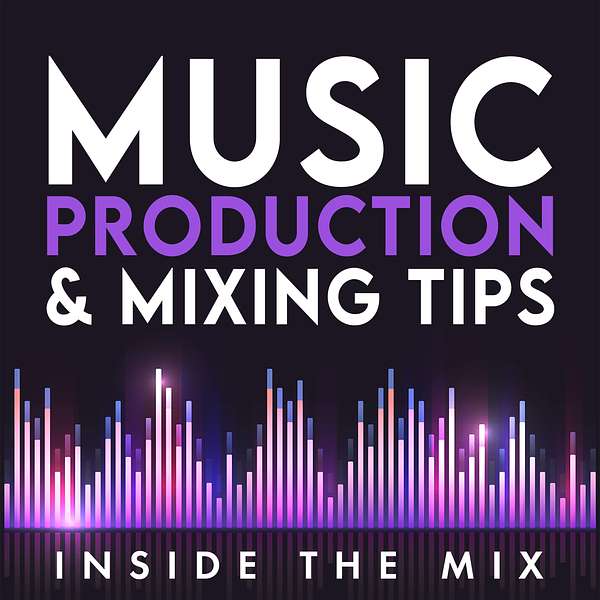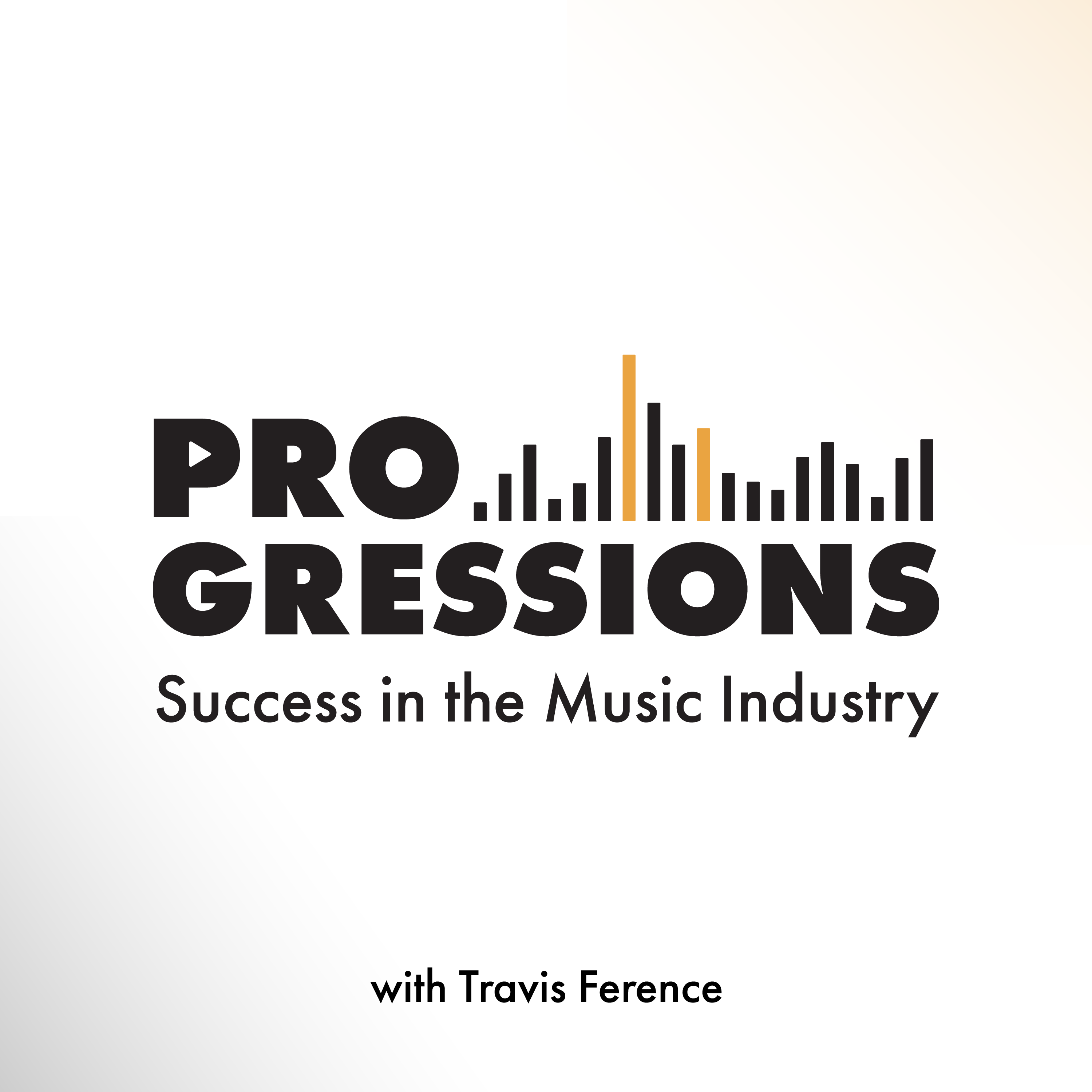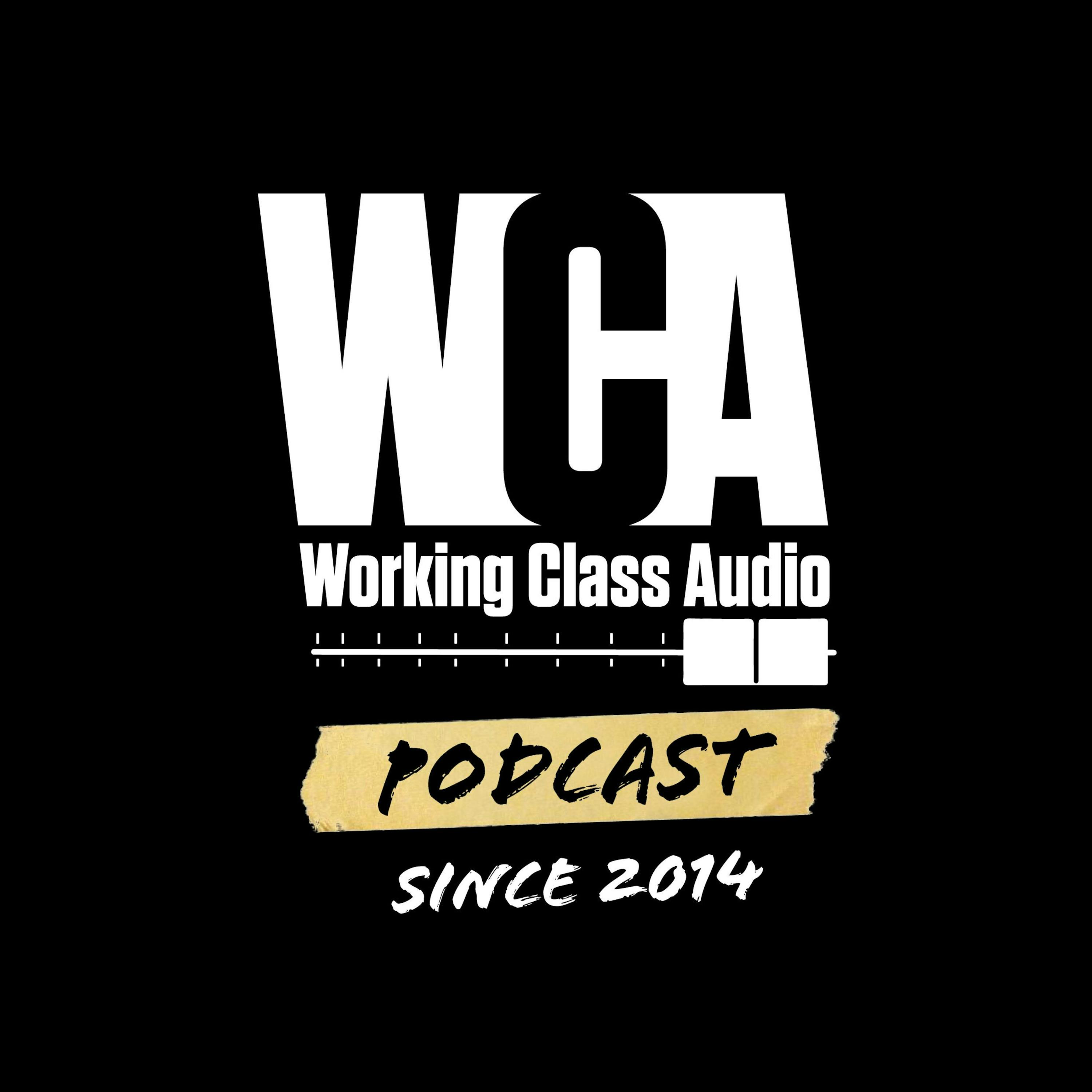
Music Production Podcast for DIY Music Producers and Artists | Inside The Mix
If you're searching for answers on topics such as: what is mixing in music, how I can learn to mix music, how to start music production, how can I get better at music production, what is music production, or maybe how to get into the music industry or even just how to release music. Either way, you’re my kind of person and there's something in this podcast for you!
I'm Marc Matthews and I host the Inside The Mix Podcast. It's the ultimate serial podcast for music production and mixing enthusiasts. Say goodbye to generic interviews and tutorials, because I'm taking things to the next level. Join me as I feature listeners in round table music critiques and offer exclusive one-to-one coaching sessions to kickstart your music production and mixing journey. Get ready for cutting-edge music production tutorials and insightful interviews with Grammy Award-winning audio professionals like Dom Morley (Adele) and Mike Exeter (Black Sabbath). If you're passionate about music production and mixing like me, Inside The Mix is the podcast you can't afford to miss!
Start with this audience-favourite episode: #175: What's the Secret to Mixing Without Muddiness? Achieving Clarity and Dynamics in a Mix
Thanks for listening!
Music Production Podcast for DIY Music Producers and Artists | Inside The Mix
#101: Mastering Audio Metrics: Decode True Peak & Short-Term LUFS Like a Pro!
If you are looking for audio mastering tips on what are LUFS and true peak, short-term LUFS in audio mastering, and what should my true peak be. Then check out EP 101 of the Inside The Mix podcast.
Ready to level up your music mastering skills? Promise you, this episode is a platinum mine. We're revealing the secrets of setting up a stellar mastering template and pinpointing True Peak levels and short-term Loudness Unites Full Scale (LUFS) levels like a pro. We're also showing you how to seamlessly mark these levels in Reaper using the RX Audio Editor, a technique I owe to the brilliant minds at Panorama Mixing and Mastering and Nick Di Lorenzo. If you've been on a treasure hunt for a free application or plugin similar to RX Audio Editor, you're not alone. Let's ponder the possibilities together.
Mastering that killer track is about to get easier for you. We're putting a spotlight on the importance of creating markers for both the True Peak level and Max Short-Term LUFS level. We'll explain why a three-second lead-in time to the Max Short Term LUFS value is crucial and how to mark your track at the three-second point like a boss. But we're not stopping there. We're sharing my top five free mastering plugins, which you can find at synthmusicmastering.com or through the link in our episode description. Get ready to transform those peaks with the RX Audio Editor and create music that's next level.
✸✸✸✸✸✸✸✸✸✸✸✸✸✸✸✸✸✸✸✸✸✸✸✸✸✸
Download the 5 Essential Free Mastering Plugins guide and immediately take your music mastering to lofty new heights. Download for free at: https://www.synthmusicmastering.com/free
Book your FREE 20 Minute Discovery Call
Follow Marc Matthews' Socials:
Instagram | YouTube | Synth Music Mastering
Thanks for listening!!
Hey, inside the Mix podcast fans, it's Classic Mike from the Beat Bakery here. Follow us on all the socials at Beat Bakery UK. You are listening to Inside the Mix podcast and here's your host, mark Matthews. Hello and welcome to the Inside the Mix podcast. I'm Mark Matthews, your host, musician, producer and mix and mastering engineer. You've come to the right place if you want to know more about your favourite synth music artists, music engineering and production, songwriting and the music industry. I've been writing, producing, mixing and mastering music for over 15 years and I want to share what I've learnt with you. Hello, folks, and welcome back to the Inside the Mix podcast. If you are a new listener, do hit that subscribe button and if you're watching on YouTube, make sure you hit that notification bell so you get notified when there are new episodes or when we go live. If you are a returning listener, a big welcome back.
Speaker 0:The previous episode was episode 100, the centenary. We celebrated our centenary, folks here at the Inside the Mix podcast Amazing stuff and this is episode 101. Interestingly, when I first created an email address back when I was 10, I used 101 in it Tenuous link, but I thought I'd throw it in there At the time of this episode going live, I am prepping for a short glamping break in Glastonbury of all places. Now, unfortunately it's not the festival that has been in gone, but it is just outside of Glastonbury and I love Glastonbury. My girlfriend and I regularly visit there. It's just up the road for much probably about an hour, hour and a half and it's fantastic. Absolutely love it. If you haven't been there before, do go visit. I absolutely love it around there. I'm originally from that neck of the woods anyway, so I am biased, but that's what I'll be doing when this episode goes live.
Speaker 0:This episode, episode 101, is continuing with the mastering theme, so we are setting up our mastering session. In the previous episode, episode 100, I demonstrated how you can create a mastering template. In episode 99, we also looked at Lough's Loudness Unit Full Scale. So in this episode what we're going to do is we're going to look at how we can prep the session further by identifying the True Peak levels and the short term Lough's levels as well, and how we can then add markers in Reaper or your DAW so you know where they are. So when you're doing your master you can refer straight away to that point where you know there is a True Peak or you know there is the maximum short term Lough's reading. But slow your roll. Before we carry on any further, head over to synthmusicmasteringcom and download my guide to the five essential free mastering plugins.
Speaker 0:Let's dive into this episode. So this is a relatively straightforward process, folks. What I've done is I've opened Rx Audio Editor. I've got just the standard edition here and I've imported the mix into Rx Audio Editor.
Speaker 0:I've opened Waveforms stats. So I've got the statistics for the waveforms for this and I can see here. I've got True Peak, sample Peak, total RMS, I've got Max Momentary Short Term and Integrated Loudness and Loudness Range. I'm reading those off if you're not watching this on YouTube. And the great thing is what I can do with this is I can click on this orange sort of icon to the right of the reading and it will tell me in the bottom left where that True Peak level is. So I can see it's at 23 seconds or 23.926 seconds. So I'm going to make a note of that. That's my True Peak, okay. So I'm going to do the same for Max Short Term Loudness. So in the Loudness, or rather in the Waveform statistics, I've got Max Short Term Loudness is minus 24.7 and that happens at 25.205. So, just to go back, my True Peak happens at 23.926 and it's minus 12.5. I've got those two readings. I'm now gonna jump over to my DAW and I'm going to create markers using those two values.
Speaker 0:But before we do that, I just wanna give a big shout out to Panorama Mixing and Mastering and Nick Di Lorenzo, because I actually got this particular part of my workflow from Panorama Mixing and Mastering and the amazing YouTube videos, so please do go check that out. I wanted to give a shout out to Nick because it is a fantastic technique for you to use in your mastering and I use this all the time in every mastering session, and I wanted to share this with the Inside the Mix podcast audience. In case you weren't aware of Panorama Mixing and Mastering, please do go check them out. Also, rx Audio Editor isn't free, so what I wanna know from you guys is this is there a free application or plugin similar to Rx Audio Editor? Let me know in the comments on YouTube or send me a message on Instagram at Inside the Mix podcast. I would love to know if there is a free application or plugin similar to Rx Audio Editor.
Speaker 0:So here I am, back in Reaper, and Reaper is my DAW of choice, as you would have found out in episode 100, do go check that one out. And here I've got my True Peak Reading and my Max Short Term Luffs Reading, represented by markers. You can do this in any DAW, because any DAW is gonna give you the ability to use markers. So I've disabled Snap to Grid in Reaper by pressing Option S, because I don't want my markers to snap to the grid when I am dragging them. Or, alternatively, you can just click on the horseshoe at the top left but Shortcuts People, option S.
Speaker 0:So the first one, true Peak. I'm looking at my list to the right of me here and it's 23.926. So let's drag that. I'm gonna get as close as I can, 23.928. That will do. Now I've got Short Term Luffs and this is a little different. My reading is 25.205 seconds, so I'm gonna drag it and get as close as I can. So I've got 25.20. But I'm actually now gonna drag it to 22.205 or as close as, because, remember, short Term Luffs are three seconds. It's a reading taken over three seconds. So let's drag that back. So 23.205. Let's get as close as I can and 23.206.
Speaker 0:So I now know if I set a three second loop region. So I'll turn Snap back on three second loop region or approximate two. I'm gonna get my Max Short Term Luffs value. So why is this important? You might be thinking. Well, with True Peak, what I can do is this I now know my exact True Peak level. So when I am auditioning my master and I'm checking out that True Peak, when I'm limiting or clipping, I know immediately where my True Peak is in the track and it's gonna eliminate any of that scrolling through the track and arbitrarily picking a point or trying to identify where that True Peak is. I now know exactly where it is. So with the Max Short Term Luffs, what this enables me to do is, quickly, I can go in and see any changes that I've made with regards to gain compensation or maybe some saturation or anything along those lines. I can quickly set that three second loop region and I'll be able to see exactly how my Max Short Term Luffs have changed with regards to the processing that I have done, for the final marker I have is this head marker and this is 0.3 seconds of silence right at the beginning.
Speaker 0:The reason I do this and there's a little fade there as well. Actually you can't see it, but on YouTube, if I were to zoom in, you'd be able to see this tiny little fade and Reaper automatically adds it at the beginning. But anyway, this marker, this head marker, this three millisecond silence is there so that when this is uploaded to a platform, a streaming platform, it just negates any possibility that there'll be a harsh clip or harsh intro at the beginning, because I've got this tiny little bit of silence and I've noticed this on SoundCloud. There's a song I uploaded a few years back and I didn't have this at the beginning and the start there's almost like this initial really harsh transient hit, and I've put this in to try and negate that. So there we go, folks.
Speaker 0:More essential tips to improve your mastering session preparation. These tips are designed to make it easier and quicker for you in the mastering process so you can spend more time actually being creative rather than wondering where these values are. By doing this, immediately, you're gonna know where your true peak is. You're also immediately gonna know where your short term, your max short term LUFs value is, and you've got that point. Three second silence at the beginning as well. So really, really good stuff. As I mentioned right at the beginning as well.
Speaker 0:If you know of a free audio editor similar to RX, please do let me know in the comments on YouTube or send me a DM on at inside the mix podcast on Instagram. But just to summarize what we've done today you've got your mix right. You're gonna drag that into your audio editor. I've used RX audio editor. You're gonna use waveform statistics to find out the true peak level and also the max short term LUFs level. Okay, you're gonna jump into your DAW and you're gonna set markers for both those values.
Speaker 0:The big difference is, with the max short term LUFs value, you're gonna have a three second lead in time to it. So if your max short term LUFs value is 25 seconds, you're gonna set your marker at 22 seconds. So you've got that three second lead in and you can create that cycle region. And a final bit have that initial start that head marker right at the beginning, there, at point three seconds. That way you can negate any harsh transients that may appear on streaming platforms. I'm not saying it will, but I just put it in there as like a belt and braces approach. You know what I mean, without saying if you're from the UK, if you don't Google it, it does make sense. So before you go, folks, make sure you head over to synthmusikmasteringcom and download my five essential free mastering plugins. Alternatively, you can click on the link in the episode description.









